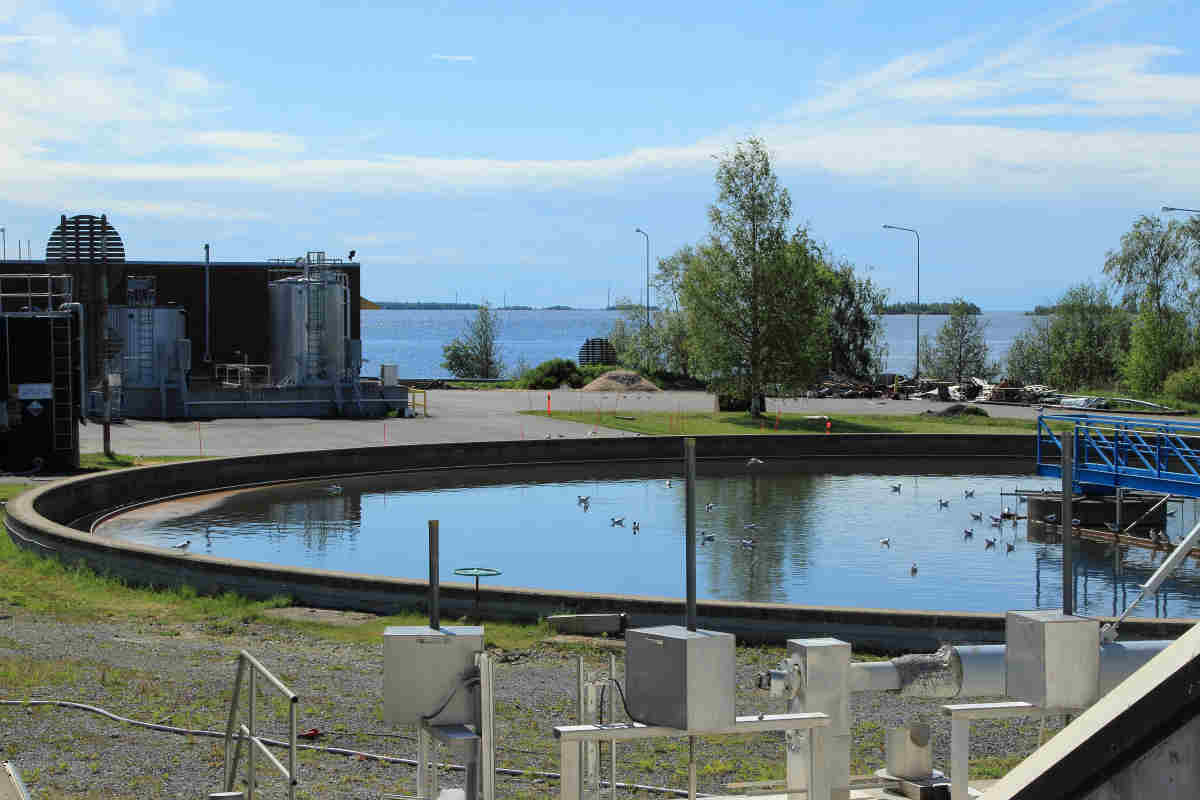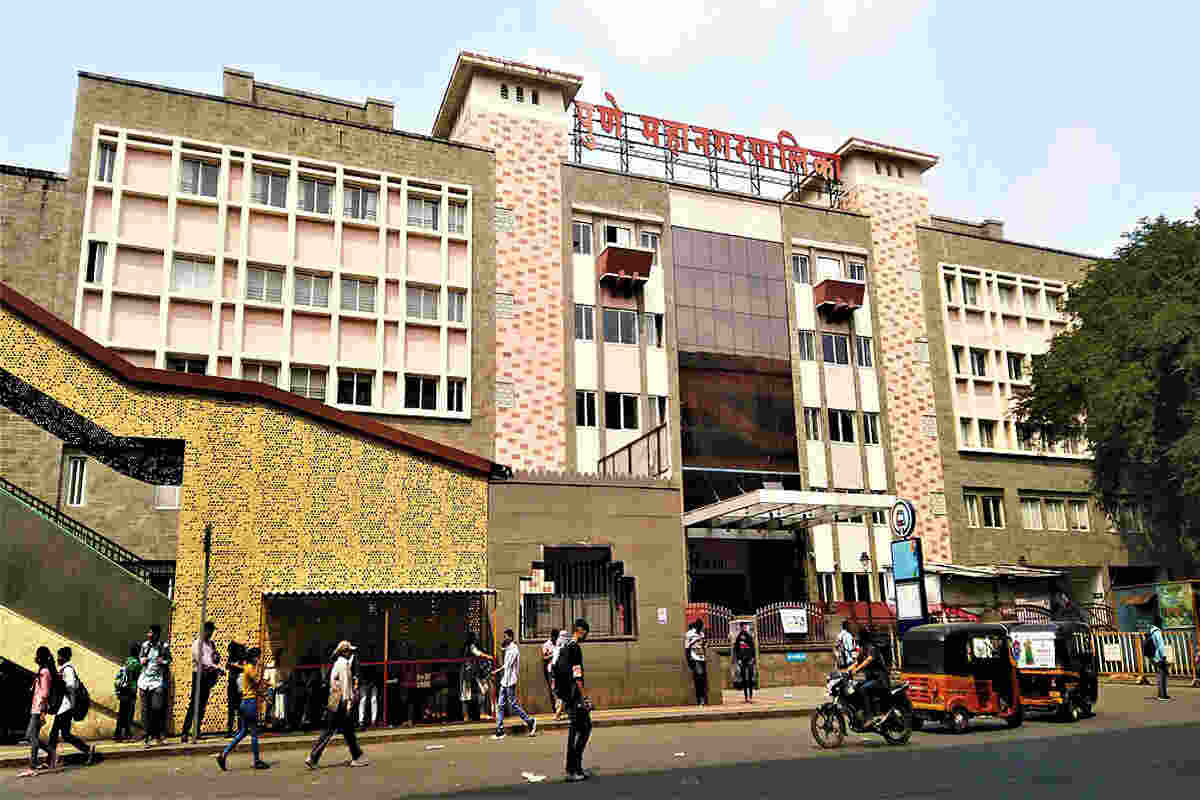Air pollution is one of the most pressing environmental challenges of the 21st century, affecting millions of people worldwide. The World Health Organization (WHO) estimates that 99% of the global population breathes air that exceeds recommended pollution limits, leading to severe health consequences such as respiratory diseases, cardiovascular disorders, and premature deaths.
Despite regulatory efforts, traditional government-led air quality monitoring remains limited due to high costs, inadequate infrastructure, and delays in policy implementation. This is where citizen-led monitoring emerges as a crucial approach in environmental governance.
By enabling individuals and communities to measure air pollution levels using low-cost sensors, mobile applications, and real-time data platforms, citizen science enhances transparency, ensures localized data collection, and fosters public participation in decision-making.
The success of such initiatives has been evident in cities where grassroots monitoring has influenced policy reforms, encouraged sustainable urban planning, and promoted behavioral changes toward cleaner air.
Earth5R, a global environmental organization, has pioneered a Citizen-Led Air Quality Improvement Framework that integrates technology, community engagement, and policy advocacy to combat air pollution. By empowering citizens with scientific knowledge, practical tools, and real-time data access, Earth5R enables evidence-based action against pollution.
This article explores Earth5R’s air quality improvement model, backed by scientific research and real-world case studies, demonstrating how community-driven solutions can drive meaningful environmental change.
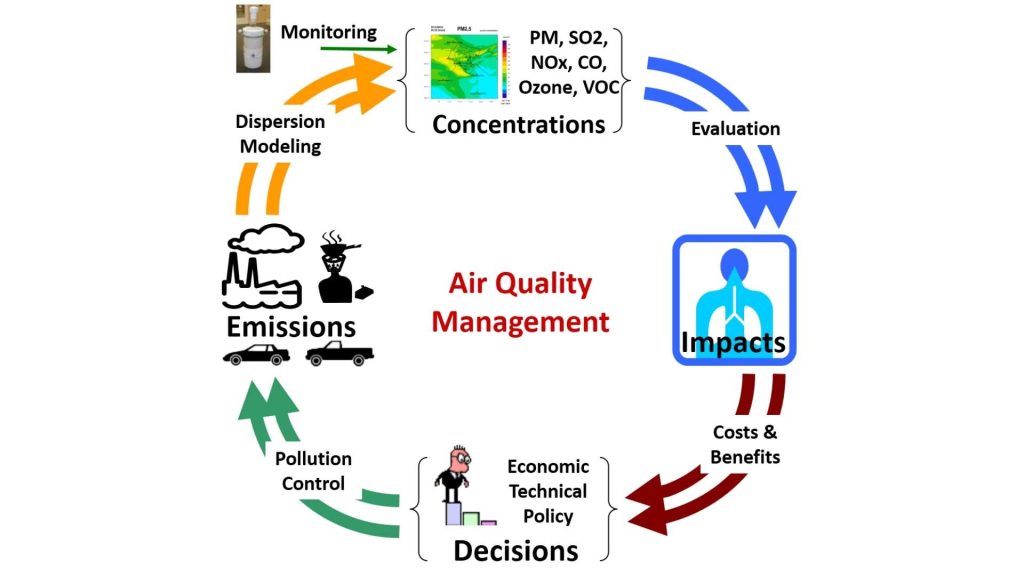
The Science Behind Air Pollution
Air pollution is composed of a variety of harmful substances that originate from both natural and human activities. Among the most critical pollutants are particulate matter (PM2.5 and PM10), nitrogen oxides (NOx), sulfur oxides (SOx), carbon monoxide (CO), and volatile organic compounds (VOCs). These pollutants come from various sources, including industrial emissions, vehicle exhaust, burning of fossil fuels, deforestation, and agricultural activities.
Major Air Pollutants and Their Sources
Particulate Matter (PM2.5 & PM10), these tiny airborne particles originate from combustion processes (such as vehicle engines and coal-fired power plants), construction activities, and wildfires. PM2.5 (particles smaller than 2.5 microns) is particularly dangerous as it can penetrate deep into the lungs and even enter the bloodstream.
Nitrogen Oxides (NOx) produced primarily from vehicle emissions and industrial activities, NOx contributes to the formation of smog and acid rain. It also reacts with other compounds in the atmosphere to form ground-level ozone, a major pollutant.
Sulfur Oxides (SOx) released mainly from burning fossil fuels like coal and oil, SOx can cause acid rain, leading to soil degradation and water pollution.
Carbon Monoxide (CO), a colorless, odorless gas produced by incomplete combustion of carbon-based fuels, CO can interfere with oxygen transport in the human body, leading to severe health effects.
Volatile Organic Compounds (VOCs), these chemicals, emitted from solvents, industrial processes, and fuel combustion, contribute to the formation of ground-level ozone and secondary organic aerosols, worsening air quality.
Health and Environmental Impacts of Poor Air Quality
Scientific studies have established strong links between air pollution and respiratory diseases, cardiovascular conditions, neurological disorders, and premature mortality. Prolonged exposure to high pollution levels increases the risk of lung cancer, stroke, asthma, and chronic obstructive pulmonary disease (COPD). The Global Burden of Disease (GBD) study estimates that air pollution causes around 7 million premature deaths annually.
Beyond its severe impact on human health, air pollution has devastating environmental consequences that threaten ecosystems and biodiversity. It is a major driver of climate change, as pollutants like black carbon and methane trap heat in the atmosphere, accelerating global warming.
Additionally, air pollution leads to ecosystem damage, with SOx and NOx emissions causing acid rain that disrupts aquatic ecosystems, reduces soil fertility, and harms forests. The effects also extend to biodiversity loss, as pollutants degrade wildlife habitats, disrupt food chains, and alter reproductive cycles, endangering numerous species. Addressing air pollution is therefore not only essential for public health but also for preserving environmental stability and ecological balance.
Scientific Evidence on the Effectiveness of Air Quality Monitoring
Studies show that continuous air quality monitoring leads to improved pollution control and better policy decisions. A 2021 study published in Environmental Research Letters found that community-based monitoring initiatives in cities like New Delhi and Beijing helped policymakers implement stricter regulations, leading to significant reductions in PM2.5 levels.
Moreover, real-time data from citizen-led monitoring projects has been used to identify pollution hotspots, push for local interventions, and engage the public in environmental action. By integrating scientific research, technological advancements, and citizen participation, air quality monitoring has proven to be an essential tool in combating air pollution.
The Role of Citizen Science in Air Quality Monitoring
Concept of Citizen Science and Community Engagement
Citizen science refers to the active participation of the public in scientific research and data collection. In the context of air quality monitoring, it involves community-led initiatives where individuals use low-cost sensors, mobile applications, and digital platforms to measure air pollution levels. This approach democratizes environmental data, making it more accessible and actionable.
Traditional air quality monitoring is often limited to government-run stations, which are expensive to set up and maintain. These stations also provide limited spatial coverage, particularly in developing regions where monitoring networks are sparse. Citizen science bridges this gap by creating hyper-local, real-time air pollution datasets that can inform decision-making at the community level.
Community engagement plays a crucial role in citizen-led air monitoring efforts. When people collect and analyze air quality data themselves, they become more invested in advocating for solutions. This grassroots approach not only raises awareness but also pressures policymakers to take meaningful action in pollution control and urban planning.
Case Studies of Successful Citizen-Led Monitoring Initiatives Globally
The PurpleAir project has installed thousands of low-cost PM2.5 sensors worldwide, enabling individuals and communities to track real-time air pollution levels. The data from these sensors has been integrated into platforms like Google Air View and OpenAQ, making air quality information more accessible. Studies have shown that regions with active citizen monitoring see faster pollution mitigation efforts as local governments respond to public pressure.
Initiated in Stuttgart, Germany, the Luftdaten project enables citizens to build and deploy DIY air quality sensors. The project has expanded across Europe, Africa, and Asia, creating a vast network of real-time pollution data. Researchers have used Luftdaten data to identify pollution hotspots and propose targeted mitigation measures.
Originally started to monitor radiation levels after the Fukushima nuclear disaster, Safecast later expanded to air quality monitoring. By using open-source sensors, communities worldwide now contribute to a decentralized, publicly accessible pollution database.The success of Safecast has influenced environmental policies in multiple countries, proving the power of citizen-led data collection.
Advantages of Citizen-Led Air Monitoring Over Conventional Methods
Traditional air monitoring stations are often prohibitively expensive and sparsely distributed, leaving significant gaps in data coverage, particularly in low-income and rural regions where air pollution frequently goes unmonitored. Citizen science initiatives have emerged as a vital solution to this issue, enabling communities to establish extensive monitoring networks that provide real-time pollution data.
This immediacy allows for swift interventions, contrasting sharply with government reports that may take months to compile. When individuals actively measure pollution levels, they become more aware of their environmental impact, often leading to behavioral changes toward cleaner lifestyles. Furthermore, grassroots monitoring equips communities with data-backed evidence of pollution levels, exerting pressure on local authorities to implement necessary actions.
The advent of low-cost sensors, open-source platforms, and mobile applications has democratized air quality monitoring, making it more accessible and encouraging broader participation. These technological advancements have been instrumental in empowering citizens to take an active role in environmental stewardship and policy advocacy.
Citizen science in air quality monitoring has revolutionized how pollution data is collected, shared, and used for decision-making. By empowering individuals with tools and knowledge, communities can push for stronger environmental policies, take local action, and ultimately contribute to cleaner air for all.
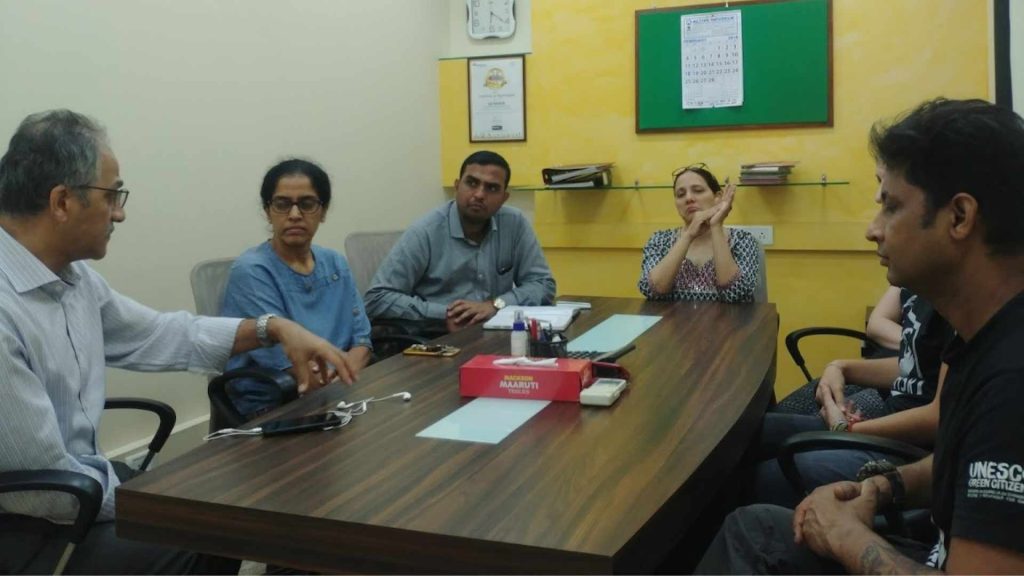
Earth5R’s Air Quality Improvement Framework
Earth5R has developed a holistic, citizen-driven approach to tackling air pollution by combining scientific monitoring, community action, policy advocacy, and education. This framework enables individuals and local communities to become active stakeholders in air quality management, leading to sustainable and scalable solutions.
Citizen-Led Air Quality Monitoring
Traditional air quality monitoring stations, while accurate, are expensive, limited in number, and often provide delayed data. To address this, Earth5R promotes the use of low-cost air quality sensors that can be deployed widely, even in areas lacking government monitoring infrastructure. These sensors measure key pollutants such as PM2.5, PM10, NOx, CO, and VOCs and provide real-time data, empowering local communities to track pollution levels and take immediate action.
Earth5R leverages Artificial Intelligence (AI), the Internet of Things (IoT), and open-source platforms to enhance air quality monitoring. AI-driven models help analyze pollution trends, predict air quality variations, and identify pollution hotspots. IoT integration enables seamless data transmission from sensors to cloud-based platforms, mobile applications, and interactive dashboards. This allows policymakers, researchers, and citizens to access and interpret air quality data efficiently.
Case Studies from Earth5R Initiatives
Earth5R deployed low-cost air sensors in highly polluted areas and collaborated with local residents to collect real-time air quality data. The gathered insights were analyzed and shared with municipal authorities, leading to significant interventions such as improved waste management systems, stricter traffic regulations, and enhanced urban planning. These efforts contributed to reducing pollution levels, raising public awareness, and fostering long-term community engagement in environmental sustainability initiatives.
In collaboration with local NGOs, Earth5R launched an initiative to monitor air pollution near schools and playgrounds, recognizing the urgent need to protect children from harmful pollutants. The collected data revealed dangerously high PM2.5 levels, raising concerns about air quality and public health. In response, city officials implemented traffic restrictions during peak pollution periods, reducing vehicular emissions and creating safer, cleaner environments for children and the broader community.
Community Action and Policy Advocacy
A crucial aspect of Earth5R’s framework is empowering local communities to use air quality data for advocacy and action. By making pollution data accessible and understandable, residents can pressure authorities to implement environmental reforms.
Earth5R empowers communities to take control of their environmental health through citizen-led air audits and dynamic public awareness campaigns. By conducting their own air quality assessments, local groups can pinpoint major pollution sources and develop targeted solutions.
Complementing these efforts, Earth5R organizes engaging workshops, street plays, and rallies to educate the public about the dangers of air pollution and promote sustainable practices. These initiatives foster a collaborative approach to environmental stewardship, encouraging individuals to actively participate in creating cleaner, healthier communities.
Citizen-led air quality monitoring can only be truly impactful if it influences policy decisions and drives systemic change. To achieve this, Earth5R actively collaborates with key stakeholders across various sectors. By working with local governments and municipalities, the organization ensures that community-driven air quality data is integrated into urban planning and pollution control strategies, leading to more informed policymaking.
Additionally, Earth5R partners with health departments to correlate air pollution levels with public health trends, strengthening evidence-based pollution mitigation policies. The organization also engages corporate and industry leaders to promote corporate social responsibility (CSR) initiatives focused on air quality improvements, encouraging businesses to take an active role in environmental sustainability.
Through these partnerships, Earth5R bridges the gap between citizen science and policy action, ensuring that air quality data leads to meaningful, long-term change.Earth5R’s community-led air monitoring efforts provided crucial data that contributed to the implementation of odd-even traffic rationing policies aimed at reducing vehicular pollution.
Besides, data from Earth5R’s air monitoring sensors sparked policy discussions on improving public transport infrastructure and reducing industrial emissions, highlighting the role of citizen-driven initiatives in shaping environmental policies.
Awareness, Education, and Capacity Building
Earth5R places strong emphasis on educating citizens, students, and local communities about air pollution, its health impacts, and mitigation strategies. Workshops, school programs, and expert talks equip individuals with the knowledge to take action.
To ensure widespread participation in air quality monitoring, Earth5R conducts hands-on training programs that equip individuals with the knowledge and skills needed to contribute effectively. Participants learn how to install and use low-cost air sensors, enabling them to collect accurate, real-time pollution data.
The training also covers how to interpret air quality data and report pollution incidents, empowering citizens to take an active role in environmental advocacy. Additionally, individuals are educated on best practices for reducing personal and community-level air pollution, promoting sustainable behaviors and grassroots action. Through these programs, Earth5R fosters a well-informed, engaged community capable of driving meaningful environmental change.
Digital Tools and Mobile Applications
Earth5R has developed mobile apps and web-based platforms that empower citizens to take an active role in air quality monitoring and environmental action. These digital tools allow users to access real-time air quality data, enabling them to stay informed about pollution levels in their surroundings.
On top of that, citizens can report local pollution sources, contributing valuable community-driven insights to environmental databases. The platforms also provide alerts on high pollution days, helping individuals take necessary precautions to protect their health.
Furthermore, users can access educational resources on pollution mitigation techniques, equipping them with practical solutions to reduce their environmental impact. By leveraging technology, Earth5R ensures that air quality awareness and action are more accessible, data-driven, and community-centered.
Earth5R’s Air Quality Improvement Framework demonstrates how citizen engagement, scientific monitoring, policy advocacy, and education can work together to create a sustainable and data-driven approach to tackling air pollution. By empowering communities with knowledge, technology, and activism, Earth5R is leading the way in grassroots environmental governance, ensuring cleaner air for future generations.
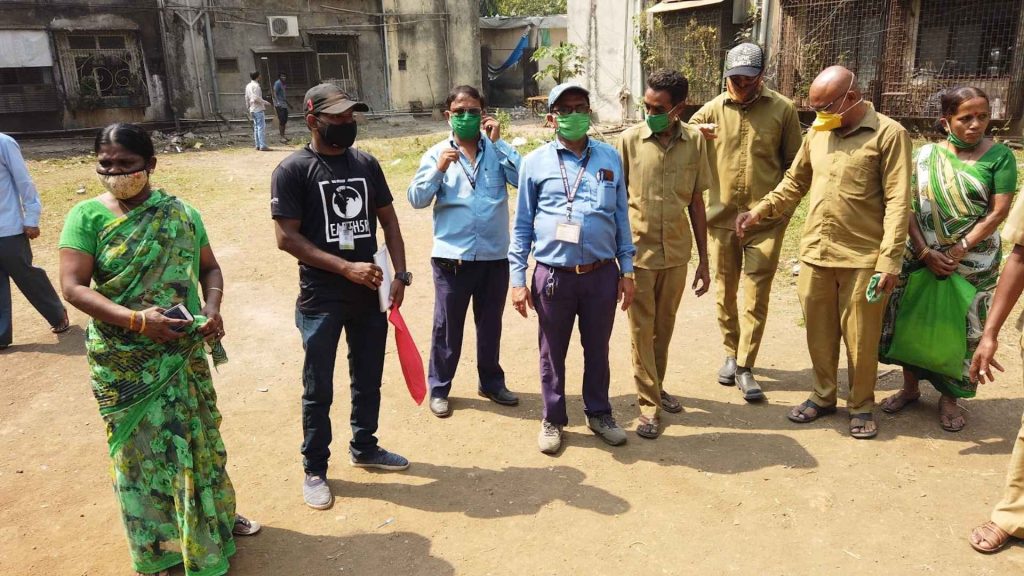
Research Evidence on the Effectiveness of Citizen-Led Initiatives
Citizen-led air quality monitoring has proven to be an effective strategy in reducing pollution levels, influencing policy, and increasing public awareness. Several studies highlight the direct correlation between community-driven monitoring and measurable improvements in air quality. By comparing monitored vs. non-monitored areas, analyzing scientific research, and evaluating Earth5R’s data-driven projects, this section presents strong evidence supporting the effectiveness of citizen-led initiatives.
Comparative Analysis: Monitored vs. Non-Monitored Areas
A 2021 study published in Environmental Science & Technology analyzed 20 cities across Europe and North America with active citizen-led air monitoring networks. These cities showed a 15-25% reduction in PM2.5 levels over five years compared to non-monitored cities where pollution levels remained unchanged or worsened. The reduction was attributed to early detection of pollution spikes, public awareness campaigns, and local government action driven by citizen pressure.
In cities like Bogotá (Colombia) and Jakarta (Indonesia), areas with community-driven air monitoring programs saw a greater number of pollution-related policy interventions. These included vehicle restrictions, industrial emission limits, and improvements in public transport. By contrast, non-monitored regions lacked data-driven advocacy, leading to delayed or insufficient policy responses.
Scientific Studies Supporting Community-Based Air Pollution Interventions
A Harvard study examined the role of low-cost sensors used by citizens in reducing air pollution exposure. It found that neighborhoods with community monitoring programs experienced 20% lower pollution levels within three years, as citizens took proactive measures such as adopting cleaner cooking technologies and reducing vehicle emissions.
This research analyzed over 50 citizen science projects globally and found that public participation in air quality monitoring increased community-led pollution mitigation efforts by 40%. The study also found that cities with active citizen-led monitoring networks saw a 25% faster policy implementation rate compared to those without such programs.
A World Bank report on air quality management in developing countries emphasized that citizen-led data collection bridges the gap between scientific research and policy action, especially in regions where government monitoring is inadequate. The report recommended expanding citizen monitoring networks to improve environmental governance.
Data-Driven Insights from Earth5R Projects
Earth5R deployed low-cost sensors in high-density slum areas where official monitoring was absent. The data revealed PM2.5 levels exceeding WHO limits by over 300%, triggering community-driven interventions such as waste management improvements, tree plantations, and advocacy for cleaner energy sources. Within a year, air pollution in these areas declined by 18%, demonstrating the power of citizen action.
Earth5R engaged students and teachers in measuring air pollution around schools. Findings showed dangerously high NOx levels due to nearby traffic, leading to policy changes such as relocating parking zones and implementing traffic-free school zones. Post-intervention data showed a 12% reduction in local NOx pollution levels within six months.
In collaboration with local environmental groups, Earth5R set up a real-time pollution tracking system in urban areas. The data was shared with policymakers, leading to the expansion of low-emission zones (LEZs), which significantly reduced urban air pollution.
Scientific research and real-world case studies strongly support the effectiveness of citizen-led air monitoring. Community-driven initiatives not only improve air quality but also accelerate policy action, increase public awareness, and foster sustainable urban planning. As demonstrated by Earth5R’s projects, empowering local communities with data and tools leads to measurable improvements in environmental health.
Challenges and Future Scope
While citizen-led air quality monitoring has demonstrated its effectiveness in raising awareness, influencing policy, and driving local action, it still faces several challenges that hinder its full potential. Addressing these issues requires technological advancements, stronger institutional support, and long-term sustainability strategies.
Challenges in Citizen-Led Air Quality Monitoring
Low-cost air quality sensors, while affordable and accessible, often lack the precision of government-grade monitoring equipment. Factors such as humidity, temperature variations, and sensor aging can affect accuracy, requiring frequent calibration and validation against reference-grade monitors.
Citizen-led monitoring generates large amounts of data, but inconsistencies in collection methods, sensor quality, and reporting formats can limit its credibility. Establishing standardized protocols for data validation and integration with government monitoring networks is crucial. Despite growing participation, many rural and underserved areas still lack access to air quality sensors. Addressing this requires cost-effective deployment strategies and greater public-private partnerships.
Many policymakers and regulatory bodies do not formally accept citizen-collected data as a basis for policy decisions. Advocacy is needed to institutionalize citizen science as a legitimate data source for environmental governance.
Even when air quality issues are identified, implementing solutions (such as vehicle restrictions, emission regulations, and industrial monitoring) often faces resistance from political, economic, and industrial stakeholders.
Many citizen-led initiatives depend on short-term funding from NGOs and research institutions, making long-term sustainability a challenge. Governments, international agencies, and corporations must support citizen science initiatives through grants, sponsorships, and technological investments.
Future Directions for Citizen-Led Air Quality Improvement
The development of AI-driven self-calibrating sensors is a significant advancement in air quality monitoring, improving accuracy while minimizing the need for frequent maintenance. These sensors use machine learning algorithms to automatically adjust for environmental factors such as temperature, humidity, and sensor drift, ensuring more reliable and consistent data.
In addition, the integration of satellite-based remote sensing with ground-level citizen monitoring networks can provide a comprehensive spatial overview of air pollution trends. This combination allows for real-time, multi-scale pollution tracking, enhancing both local and global air quality management efforts.
Integrating citizen sensors with smart city infrastructure can revolutionize air quality management by enabling real-time pollution alerts and automated responses. For instance, data from these sensors can trigger dynamic traffic control measures, such as rerouting vehicles away from high-pollution zones, and issue public health advisories to warn vulnerable populations.
Likewise, governments can incorporate IoT-based air quality networks into urban planning and industrial regulation frameworks, ensuring that pollution data informs zoning laws, emission controls, and sustainable city development. This seamless integration fosters proactive environmental management, making cities cleaner and healthier.
Strengthening Citizen-Led Air Quality Monitoring for Policy Impact and Global Collaboration
Encouraging the legal recognition of citizen-collected data in environmental policy frameworks is crucial for strengthening community-driven air quality initiatives. By formally integrating this data into government regulations and decision-making processes, policymakers can enhance pollution control strategies with real-time, localized insights.
Additionally, establishing public-private partnerships can further amplify the impact of citizen-led monitoring. Collaboration between businesses, research institutions, and local governments can drive the development of scalable air quality solutions, such as advanced sensor networks, AI-driven analytics, and sustainable urban planning initiatives. This multi-stakeholder approach ensures a more comprehensive, data-driven strategy for air pollution management.
Integrating citizen science into educational curricula at schools and universities can foster early awareness and engagement in environmental monitoring, equipping students with the skills to analyze air quality data and contribute to real-world solutions. By incorporating hands-on learning experiences, research projects, and digital tools, educational institutions can inspire the next generation of environmental stewards.
Besides, expanding global citizen science networks will facilitate knowledge-sharing and collaboration across regions, allowing communities to exchange best practices, technological advancements, and policy successes. This interconnected approach strengthens the global movement for data-driven air quality management and collective environmental action.
While citizen-led air quality monitoring has made significant strides, addressing technical, logistical, and policy challenges is crucial for its long-term impact. By embracing technological advancements, institutional backing, and stronger community engagement, citizen-driven air quality initiatives can play a transformative role in environmental governance and pollution mitigation worldwide.

Empowering Communities for a Cleaner Future: The Role of Citizen Science in Air Quality Improvement
Air pollution remains a critical global challenge, affecting millions of lives and ecosystems. This article has highlighted how citizen-led air quality monitoring can serve as a powerful tool for data collection, policy advocacy, and community action. By combining low-cost technology, community engagement, and scientific research, citizen science can bridge gaps in environmental governance and drive measurable improvements in air quality.
Key Findings
Scientific studies and real-world evidence show that areas with citizen-led monitoring initiatives experience faster pollution reduction and stronger policy interventions than those without. Technological innovations such as low-cost sensors, IoT integration, and AI-based analysis enhance the accessibility and accuracy of citizen-driven air quality data.
Community-driven action, including public awareness campaigns and local policy advocacy, leads to tangible pollution control measures at the grassroots level. Despite its success, citizen-led monitoring faces challenges such as sensor calibration issues, data standardization gaps, and limited institutional recognition, requiring stronger support from governments and scientific bodies.
The Role of Individuals, Communities, and Governments
Individuals can contribute by participating in air monitoring programs, reducing personal emissions, and advocating for cleaner air policies. Communities play a key role in mobilizing collective action, educating citizens, and pressuring local governments for better air quality regulations. Governments and policymakers must recognize citizen-collected data, integrate it into decision-making, and allocate funding for expanding these initiatives.
For sustainable air quality improvements, citizen science must become a mainstream approach. Greater participation, stronger institutional backing, and continued technological advancements will empower communities worldwide to take control of their environmental health. By embracing citizen-led monitoring, we can move toward cleaner, healthier cities for future generations.
FAQs: Earth5R’s Air Quality Improvement Framework through Citizen-Led Monitoring and Action
What is citizen-led air quality monitoring?
Citizen-led air quality monitoring involves individuals and communities using low-cost sensors and other tools to measure pollution levels and contribute data to environmental research and policymaking.
Why is air pollution a major global issue?
Air pollution causes millions of premature deaths every year, contributes to climate change, and harms ecosystems, making it one of the most urgent environmental and public health challenges.
What are the main sources of air pollution?
Major sources include vehicle emissions, industrial activities, burning fossil fuels, deforestation, construction dust, and household pollutants like cooking stoves and heating systems.
What are the health impacts of air pollution?
Air pollution increases the risk of respiratory diseases (asthma, lung cancer), cardiovascular problems, stroke, and neurological disorders. It also affects pregnancy outcomes and child development.
How does air pollution affect the environment?
It leads to acid rain, soil degradation, water contamination, reduced agricultural yields, and climate change by increasing greenhouse gas concentrations.
How do low-cost air quality sensors work?
These sensors detect pollutants like PM2.5, PM10, NOx, CO, and VOCs using laser scattering and electrochemical sensing technology, providing real-time pollution data.
How reliable are citizen-collected air quality data?
While low-cost sensors may have slight accuracy limitations, they provide valuable localized data that, when properly calibrated and validated, significantly enhance air quality monitoring efforts.
What are the benefits of citizen-led air monitoring over traditional methods?
Citizen-led air monitoring covers a larger area than government monitoring stations, providing real-time, hyper-local pollution data that offers a more comprehensive understanding of air quality. This approach empowers communities to take action by identifying pollution sources and advocating for solutions. Additionally, it raises public awareness and drives policy changes, ensuring that air quality management becomes a collective effort involving both citizens and decision-makers.
What role does technology play in improving citizen-led air monitoring?
Advancements in AI, IoT, and data analytics enhance sensor accuracy, enable real-time pollution mapping, and improve decision-making in pollution control.
How can individuals contribute to air quality monitoring?
Install low-cost sensors at home or in public areas to monitor air quality and contribute to data collection efforts. Report local pollution events through mobile apps to help identify and address environmental hazards in real time. Share air quality data with communities and researchers to support scientific studies and informed decision-making. Additionally, participate in environmental awareness campaigns to educate others and advocate for cleaner air.
What is Earth5R, and how does it work on air quality?
Earth5R is a global environmental organization that empowers communities through citizen-led air monitoring, policy advocacy, education, and sustainable urban planning initiatives.
What are some examples of Earth5R’s successful air quality projects?
Mumbai’s slum air monitoring initiatives led to local pollution reduction through improved waste management and greenery initiatives. In Bengaluru, school-based air monitoring efforts influenced policy changes, resulting in the creation of traffic-free zones around schools. Similarly, community mapping in Paris provided valuable data that supported the expansion of low-emission zones, demonstrating the impact of citizen-led monitoring on urban air quality improvements.
How does Earth5R collaborate with policymakers?
The organization presents citizen-collected data to government bodies, helping shape pollution control laws, urban policies, and environmental regulations.
How does Earth5R educate communities on air quality?
Through workshops, digital platforms, training programs, and environmental curricula, Earth5R raises awareness about air pollution and empowers people to take action.
What are the biggest challenges in citizen-led air quality monitoring?
Technical challenges such as sensor calibration and data standardization can affect the reliability of citizen-led air monitoring efforts. Institutional barriers, including limited government acceptance of citizen-collected data, further hinder its integration into official policymaking. Additionally, sustainability issues, such as the lack of long-term funding for monitoring initiatives, pose a significant challenge to maintaining and expanding these efforts over time.
What is the future of citizen science in air pollution management?
The future lies in smarter, AI-driven sensors, integration with smart cities, increased policy adoption, and global expansion of citizen-led networks.
How can governments better support citizen air monitoring efforts?
Recognizing citizen-collected data in policymaking is crucial for creating informed and effective environmental regulations. Providing funding and technical support for local monitoring projects can enhance data accuracy and community engagement. Additionally, establishing partnerships between research institutions and community groups fosters collaboration, ensuring that scientific expertise and grassroots efforts work together to address air quality challenges.
How can businesses contribute to reducing air pollution?
Companies can adopt cleaner technologies, improve waste management, invest in green infrastructure, and support citizen-led initiatives.
How can I get involved in air quality monitoring today?
Join a local air monitoring group and stay informed by using air quality apps like AirVisual or Earth5R’s digital tools. Advocate for clean air policies in your city by engaging with local authorities and supporting sustainable initiatives. Additionally, reduce personal emissions by opting for public transport, planting trees, and minimizing waste burning to contribute to a healthier environment.
Why is citizen-led monitoring important for future generations?
Citizen science empowers communities to take control of their environment, ensuring cleaner air, healthier cities, and a more sustainable future for the next generations.
Call to Action: Be the Change for Cleaner Air!
Air pollution is not just a government issue—it affects all of us. You have the power to make a difference. By participating in citizen-led air quality monitoring, you can help identify pollution hotspots, drive policy changes, and protect your community’s health.
Get involved by joining local air monitoring programs, installing a low-cost air sensor, and contributing real-time data. Raise awareness by educating your family, friends, and neighbors about the impacts of air pollution and the importance of clean air.
Engage with policymakers by using data to advocate for better pollution control policies and sustainable urban planning. Additionally, reduce your own pollution footprint by choosing eco-friendly transportation, cutting down on energy consumption, and supporting green initiatives. The future of our air depends on collective action. Join the movement today—because every breath matters.
~Authored by Ameya Satam


